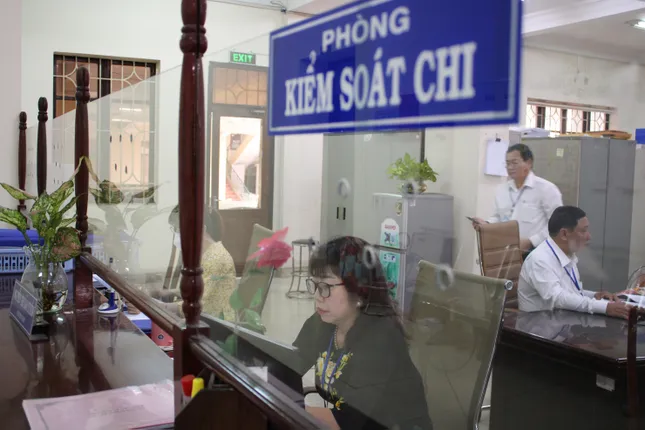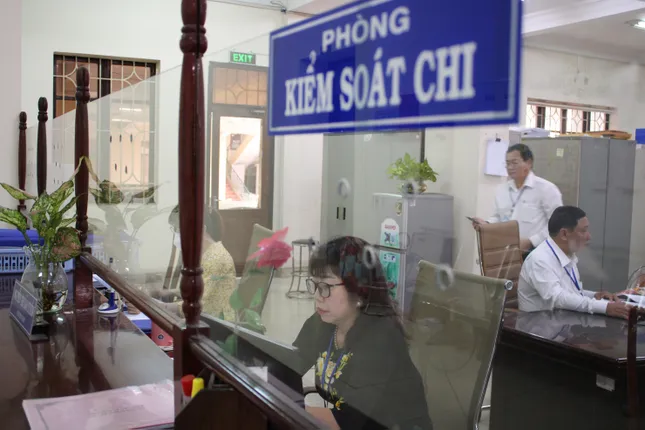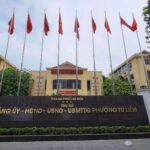The State Treasury has announced that it has completed preparations for operating and serving the two-tier local government model, which will come into effect on July 1st.
According to the announcement, the State Treasury has reported to the Ministry of Finance and promptly proceeded with the reorganization of 20 State Treasury branches, aligning with the 34 provincial-level administrative units following the merger and integration process.
The system maintains 20 State Treasury branches and no more than 350 transaction offices. Adjustments have been made regarding organization and personnel at certain units to conform to the new administrative boundaries. The refinement of the organizational structure, task allocation, and the completion of internal working regulations, along with the placement of key personnel, have been substantially concluded.

Reorganizing 20 State Treasury branches to align with the 34 provincial-level administrative units post-merger.
The State Treasury branches have been instructed to urgently transfer and receive civil servants, allocating personnel based on competence, expertise, and workload to ensure smooth operations commencing July 1st.
Regarding financial and budgetary matters, the State Treasury has collaborated with the Ministry of Finance, the Department of Finance, and revenue agencies to formulate plans for the regulation of state budget revenues and expenditures, particularly concerning expenditures related to human resources and public investment. This ensures uninterrupted operations as the new administrative units officially commence their functions.
On June 30th, the Director of the State Treasury, Tran Quan, issued an official dispatch regarding the reorganization of the State Treasury system and its readiness to serve the two-tier local government model.
The dispatch mandates that units must arrange for civil servants to be on duty 24/7, adhering to the principle of “where there is work, there must be someone to handle it.” It also emphasizes the continuous receipt of documents via the public service portal, preventing any bottlenecks, especially during the peak period from June 30th to July 4th.
Directors of State Treasury branches in the regions are required to proactively coordinate with tax, customs, and finance agencies to promptly record state budget revenues and expenditures, anticipate potential issues, and promptly address difficulties and obstacles in the process of financial transfer and handover in the respective areas.
To promptly receive and address feedback from citizens, businesses, and budget users, the State Treasury has established a hotline, enhanced guidance and propaganda, assigned civil servants to directly support transaction offices, maintained the stability of the information technology system, and ensured the continuous provision of 24/7 online public services.
The State Treasury system affirms its readiness to serve the two-tier local government model, ensuring safe, stable, and seamless operations from July 1st onward.
The Power of Unity: A Nation’s Administrative Reform
On June 30th, a nationwide ceremony will be held to announce the resolutions and decisions of the Central and local authorities regarding the merger of administrative units at the provincial and communal levels. This includes the establishment of party organizations and the designation of party committees, People’s Councils, People’s Committees, and Fatherland Front Committees at the provincial, city, district, ward, and special district levels.
The New Super-Province: Bordering More Regions Than Ever Before
Prior to the merger, Hanoi was the only locality in Vietnam that shared borders with eight other provinces. However, this distinction now belongs to another province post-merger.











![[Photo Essay]: Experts, Managers, and Businesses Unite to Forge a Path Towards Sustainable Green Industry](https://xe.today/wp-content/uploads/2025/07/z678592918-150x150.jpg)


![[Photo Essay]: Experts, Managers, and Businesses Unite to Forge a Path Towards Sustainable Green Industry](https://xe.today/wp-content/uploads/2025/07/z678592918-100x70.jpg)






